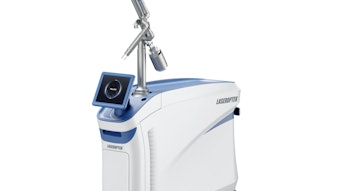
What do you do when your office manager calls in sick? Your receptionist? An ancillary provider? If even one staff member is missing—be it due to vacation, illness or emergency—it can bring the practice workflow to a screeching halt. Cross training employees to perform multiple roles within the office not only keeps the practice running smoothly, it helps improve the patient experience and reduce staff burnout.
Benefits of Cross Training
Small practices, in particular, benefit from cross training. When staff members are prepared to work in multiple positions, owners and managers can ensure that all employees have enough work to keep them busy while keeping staffing needs to a minimum.
Jean M. Casello, MD, owner and medical director of RenovoMD in Northborough, Massachusetts, cross trains all staff members. “We’re a small practice, so all of our estheticians and front desk staff are trained to do the marketing, schedule appointments and answer phones,” she says. “They’re all trained to take photographs, and they also prepare the treatment rooms and assist me during procedures, such as laser treatments or sclerotherapy where I may need an aid in the room.”
After instituting a cross training program, she was able to reduce her full-time staffing needs from seven employees to four. “I am now able to run the same office more efficiently with four employees, so there aren’t a lot of bodies around,” she says. “Everyone can help with clerical and clinical responsibilities. It’s more efficient, and we’re saving money that we can then put into marketing, and adding new services and equipment.”
Wm. Philip Werschler, MD, founder of Spokane Dermatology Clinic and Werschler Aesthetics, a large facility that includes a medspa, clinical dermatology practice and research center in Spokane, Washington, cross trains both clinical and nonclinical employees. “There’s an old saying that, ‘Failing to plan is planning to fail.’ Cross training is, for the most part, contingency planning—which becomes more important in very specialized positions,” he says. “For example, something like Mohs surgery doesn’t happen unless the clinic’s Mohs tech is there to process the tissue. We created a program where we take one or two medical assistants and cross train them in Mohs histotechnology. It’s one thing to cancel an esthetician’s schedule for some facials or waxing, but patients with skin cancer have sometimes waited awhile to get their appointments, and they must be taken care of—not having a tech isn’t an option for us.”
Dr. Werschler’s dermatology clinic and medspa are separate businesses and often very busy, so he has instituted cross training between facilities as well. “We train our receptionists for both locations, so although they’re at a different office and using a different scheduling system, it is a seamless transition,” he says. “We tend to have the medical assistants (MAs) cross trained on scheduling as well. We keep two receptionists at the clinic desk because it’s so busy, but say someone is on vacation and the other one gets sick, we can seamlessly slip the receptionist from our medspa or an MA into that role. In that case, an esthetician or medspa staff member might then back-fill that reception position, and we have all our bases covered.”
Because aesthetic practices are expected to meet a high standard of customer service, cross training multiple employees to handle front desk duties is a must, according to Glenn Morley, consultant and educator at Karen Zupko & Associates. “There must be a tag-team approach when it comes to managing the flow through a practice,” she says. “Even though you have a dedicated phone staff, you still need to have those phones rolling to at least one or two additional people—you can’t have phone calls going to voicemail if you want to be successful. Aesthetic patients will just hang up and call a different place.”
Photo copyright Getty Images.
[pagebreak]
In addition to improving patient care and satisfaction, cross training can help combat staff burnout. “Answering phones all day can be difficult; people can be mean and rude when they don’t have to look at you in person,” says Dr. Werschler. “Cross training helps create a more positive work environment when implemented as a natural occurrence of someone’s daily, weekly or monthly job duties. It’s no different from the provider’s schedule where one day you do surgery, the next day you have all injections and so forth. Cross training can be instituted a bit more formally, where every Friday, for instance, the receptionist goes over the medical records and helps catch up on medical record requests instead of answering the phone.”
Another benefit of cross training is that it brings additional sets of eyes to each position, which may allow employees to see flaws in the established routine or ways to perform the tasks more efficiently. It also encourages staff to be-come more knowledgeable about the practice as a whole. “Everybody that works in the business should have a reasonable understanding of what the business does, how it does it and why it does it,” says Dr. Werschler.
Getting Started
The first step in implementing cross training programs is identifying areas where you need more help. At RenovoMD, training more employees to help with scheduling has boosted patient retention. “Now, we have more flexible scheduling and patients don’t have to wait for a certain provider or staff member to get them on the books,” says Dr. Casello.
Morley recommends getting together with staff to look for any “hiccups” in your own practice. For example, “Are patients being put on hold when they call because you don’t have a backup plan for the phones? When they come into the practice, is there a line because no one’s cross trained for check-in?” she asks. “Everyone has been to a business that doesn’t prioritize the customer experience—and you don’t go back! Cross training provides patients with consistency and continuity, and that reads as authenticity. When a practice provides that high level of care, its retention and referrals skyrocket.”
She encourages owners and staff members to sit in the waiting room of the practice once a year for half an hour during the busiest time in the clinic. “Just watch what happens. Walking through your practice as a patient and experiencing what happens when the office is busy is an invaluable lesson,” says Morley. “Find out what happens when you are slammed, and observe how the team man-ages it. Is the patient experience any different on a crazy day from it would be on a nice quiet day? It shouldn’t be.”
Once you’ve identified areas where you need backup or extra help, make sure that each position has a detailed, written job description. Morley calls job descriptions and written protocols “playbooks.” “It’s what the person does daily, weekly and monthly, and their backup should be trained to follow that playbook,” she says.
Dr. Casello has created protocol playbooks for every position at her practice, and also offers more formal training. “We have books with protocols in them, and the staff also attends a lot of webinars and classes,” she says. “Frequently I arrange on-site training with a nurse or clinical trainer, especially with new machines or techniques.”
Written protocols are important because patients will notice if different staff members use equipment in different ways, and may question the quality of care. “Standardizing the work and clarifying the protocols related to each treatment is important to ensure quality,” says Deborah Walker Keegan, PhD, a healthcare consultant at Medical Practice Dimensions.
Photo copyright Getty Images.
[pagebreak]
Dr. Werschler recently hired an employee specifically for a multifunctional role: Within 6 to 12 months, she will have been trained in most major positions, including check-in and checkout. Aside from that, he approaches the “who” of cross training a little less formally and bases it on what his employees may be interested in. “We often just ask what they’d like to take on, but sometimes employees approach us and say, for example, they wouldn’t mind working over in the clinic one day a week to get a break from cosmetic patients,” he says.
He also finds that more formal cross training can overlap with compliance training, such as HIPAA, CLIA, OSHA, blood-borne pathogens and so forth, depending on state laws.
Cautions and Considerations
There are hazards to avoid when implementing a cross training program in your practice. As employees take on multiple roles, they may become overwhelmed with the increase in responsibilities. Keeping an eye on staff scheduling and maintaining communication with your team can go a long way toward making sure everyone has time to do their jobs well. “Sometimes an employee may not have enough time to do every task, or it’s not done in a consistent way—you must be sure to get everybody on the same page,” says Dr. Casello. “I find that every once in a while, it helps to reiterate that we’re a team and we all have to do our part.”
There may also be roadblocks in terms of skill level. Specialized skills and knowledge may not be transferrable to other staff members, so look at licensing, certifications and also natural abilities when considering which employees can be cross trained for each position. “There can be a tendency to assume that everyone is interchangeable and has knowledge and skills that they simply do not,” says Keegan. “If cross training is adopted, it is important to still recognize and consider the specialized skill levels of employees.”
Practices that implement cross training must take care to maintain clear lines in terms of the specific job duties for each position. “This is a real problem in a practice. Say the checkout person is on vacation or suddenly has to move away. Their replacement or substitute may not know all the nuances of the former employees’ added responsibilities,” says Morley. “Too many people without clear lines of demarcation means the office risks something critical not getting done or even duplication of efforts, which is wasted time and money. A manager must be really clear on who owns each responsibility and who is trained to provide backup.”
Laura Beliz is the associate editor of MedEsthetics.
Photo copyright Getty Images.











